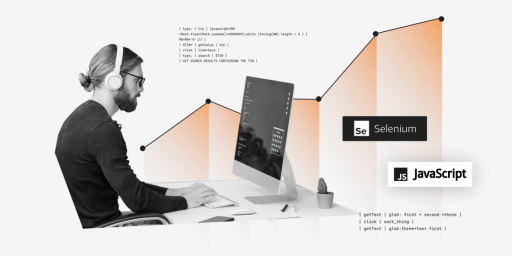Just like termites or cockroaches are the most unwelcome bugs in your home, software bugs are the unwanted residents of your software systems and applications. Sort of a pest control & extermination crew for the domain of software development, QA engineers and dedicated software testers brush through your source code, user interface, requirements, and project documentation to find and eliminate software bugs as well as the very root causes of “infestation,” either manually or by means of automated algorithms that would do the job for them.
But what exactly is a bug in software testing? What causes these bugs to appear? And how do you prioritize fixing them? Let’s find out!
“A software bug is an error, flaw, or fault in the design, source code, or a component of your software that causes it to show unintended behavior or produce incorrect/unexpected results such as system crashes.”.
Software testing is something of an art where finding and identifying a software bug is not necessarily the most difficult part of the software testing process. It’s pretty common for a bug from one part of the application to cause unexpected behavior and systems failures in a completely different, possibly even unrelated, part of the software, which makes it an especially challenging task to track these software bugs and discover their root causes.
Sources of software bugs
Errors and faults may be introduced at any stage of the Software Development Life Cycle. These can be anything from programming errors such as flawed logic and syntax mistakes in the source code to oversights in design, messy documentation, and miscommunication between team members who cover different areas of the development process.
Here is a list of the most common causes of software bugs:
- design oversights
- programming errors
- component/API incompatibility
- hardware/OS compatibility issues
- unclear requirements
- timeline deviation
- deviation from standards
- faulty documentation
- lack of communication
- conceptual misunderstandings
Software bug severity and prioritization
An application overrun by software bugs will most likely show functional (usability) and non-functional (security, performance, etc.) issues that need to be addressed before your users decide they simply had enough or encounter a critical issue that could threaten the reputation and financial condition of your entire business. These software bugs could range from faulty interface layouts and occasional freezes to system crashes and even serious security vulnerabilities that need to be tracked and fixed. But how do you measure the severity of software bugs and prioritize their fixing?
Bug severity and bug priority are two closely knit terms that describe slightly different sides of defect assessment.
Bug severity is the evaluation of the impact a particular software bug can have on the software under test. The higher the impact of a software bug, the higher severity level it is given.
| Low/trivial | Low severity bugs are defects that have zero to none effect on the functional and non-functional qualities of your software. These can be trivial things such as spelling mistakes and cosmetic issues. |
| Minor | UI defects are often classified as minor bugs. These are mostly issues that cause undesirable yet insignificant effects on user experience and system behavior. |
| Major | Major bugs are mostly defects that have a significant impact on a certain part of the system but don’t affect the rest of the features/components — your software remains somewhat usable. |
| Critical | Critical bugs are faults and errors that cause the entire system to go south. They usually break every part of your software and become blockers that, until fixed, make further development impossible. |
Bug prioritization is another side of the software bug categorization process. Determined by bug severity, bug priority is responsible for determining how quickly and in what order the identified issues need to be fixed.
| Low | These software bugs are given the least attention. They may or may not be addressed at all, depending on how busy the team is at a certain stage of software development. |
| Medium | This category contains issues that don’t require urgent resolution and may be considered for fixing in the next sprint or the final round of testing before deployment. |
| High | High-priority bugs are the functional and non-functional issues that can cause severe system degradation. Unless fixed on time, they can grow into a whole plethora of defects causing additional problems. |
| Immediate | As the name suggests, these software bugs must be resolved as soon as possible. The development is paused and no one will move a muscle until such a critical software bug is eliminated completely. |
The later you are in the development process, the more expensive it is to fix the bugs in your software. Remember this simple rule to keep your project from reaching a point of no return in technical debt.



